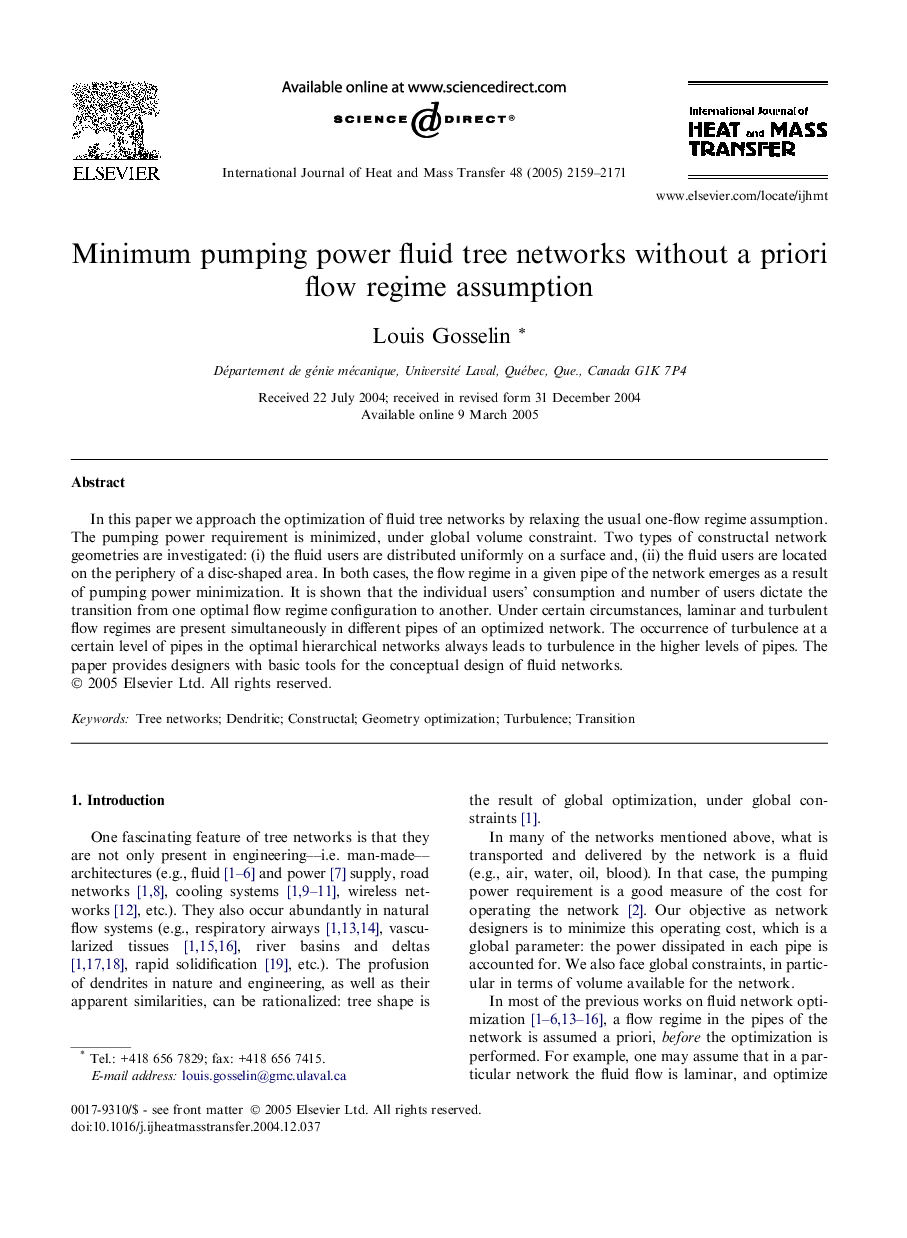| Article ID | Journal | Published Year | Pages | File Type |
|---|---|---|---|---|
| 663659 | International Journal of Heat and Mass Transfer | 2005 | 13 Pages |
In this paper we approach the optimization of fluid tree networks by relaxing the usual one-flow regime assumption. The pumping power requirement is minimized, under global volume constraint. Two types of constructal network geometries are investigated: (i) the fluid users are distributed uniformly on a surface and, (ii) the fluid users are located on the periphery of a disc-shaped area. In both cases, the flow regime in a given pipe of the network emerges as a result of pumping power minimization. It is shown that the individual users’ consumption and number of users dictate the transition from one optimal flow regime configuration to another. Under certain circumstances, laminar and turbulent flow regimes are present simultaneously in different pipes of an optimized network. The occurrence of turbulence at a certain level of pipes in the optimal hierarchical networks always leads to turbulence in the higher levels of pipes. The paper provides designers with basic tools for the conceptual design of fluid networks.
